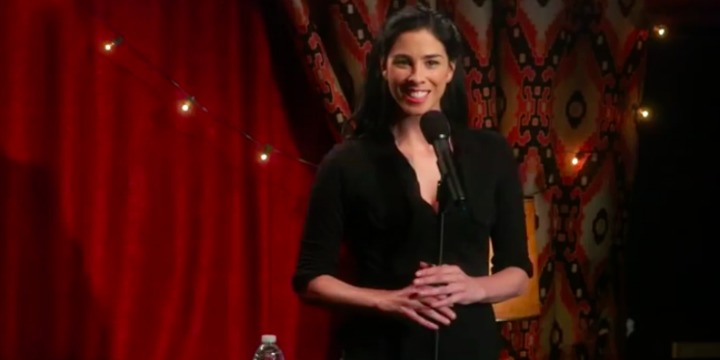 Fot. Archives des Musées Nationaux/Archives Nationales
Fot. Archives des Musées Nationaux/Archives Nationales
 Latami handlował skradzionymi po wojnie obrazami. Gdy zmarł, dzieła Picassa czy Moneta znaleziono w tajnej skrytce
Latami handlował skradzionymi po wojnie obrazami. Gdy zmarł, dzieła Picassa czy Moneta znaleziono w tajnej skrytce
Anna Arno
Bruno Lohse był zaangażowany w konfiskaty ponad 30 tysięcy obrazów, w większości własności francuskich Żydów. To on polecał młodym niemieckim żołnierzom, które domy mają plądrować w pierwszej kolejności.
Max Beckmann zapewne przedstawił go w swoim “Śnie o Monte Carlo”. Na tym obrazie z 1943 roku Bruno Lohse jest jednym z dwóch krupierów, którzy wymachują mieczami nad stołem nakrytym zielonym suknem. Karta, którą trzyma w dłoni Lohse, przypomina miniaturowy obraz, a czerwone plamki mogą oznaczać, że mężczyzna ma na dłoniach krew. Postawny, wysportowany, młody doktor historii sztuki przed wojną zaczynał działalność jako marszand w Berlinie. Syn antynazisty w 1933 roku wstąpił do SS. Energiczny, kompetentny został “człowiekiem Göringa w Paryżu”.
Zatrudniony w Sztabie Operacyjnym Rosenberga [od nazwiska Alfreda Rosenberga, ministra Rzeszy do spraw okupowanych terytoriów wschodnich] był zaangażowany w akcje plądrowania prywatnych zbiorów sztuki należących do wywożonych do obozów zagłady Żydów. Po wojnie spędził kilka lat we francuskim więzieniu, ale ostatecznie został uniewinniony.
HISTORYK JONATHAN PETROPOULOS poznał Lohsego w ostatniej dekadzie jego życia (zmarł w 2007 roku w wieku 96 lat). Prowadził grę w kotka i myszkę z nazistowskim weteranem, który jako doradca do spraw sztuki spokojnie dożywał swoich dni w wypełnionym obrazami monachijskim mieszkaniu. Ta historia pełna jest meandrów, ciemnych zaułków, niedopowiedzeń, fałszywych dokumentów, wybielanej przeszłości i nieczystych transakcji. Lohse prowadził uczonego do ulubionych knajpek. Pokazywał dokumenty ze swego “bohaterskiego okresu”, fotografie i listy od Göringa, którego do końca życia poważał, traktował jak “zastępczego ojca”. Sędziwy Lohse nieomal codziennie jak relikwię wyciągał notę, którą marszałek napisał krótko przed śmiercią w Norymberdze. Göring zapewniał w niej, że jego podwładny wielokrotnie prosił o zwolnienie go z paryskich obowiązków i powrót na front. W dodatku został powołany do wojska i tylko wykonywał rozkazy.
Taka była główna linia obrony Lohsego (podobna do argumentów sądzonego w Jerozolimie Adolfa Eichmanna). Tymczasem Lohse był zaangażowany w konfiskaty ponad 30 tysięcy obrazów, w większości własności francuskich Żydów. To on polecał młodym niemieckim żołnierzom, które domy mają plądrować w pierwszej kolejności. Wiedział, co czekało ich właścicieli. Nie ma dowodów na to, że Lohse sam mordował.
Ale ponoć przechwalał się niemieckiemu oficerowi, że żydowskich właścicieli likwidował “własnymi rękami”.
BRUNO LOHSE WSPÓŁTWORZYŁ POTĘŻNĄ, PRYWATNĄ KOLEKCJĘ Hermanna Göringa.
Po cichu robił własne interesy. Przez kilkadziesiąt lat po wojnie handlował kradzionymi obrazami. Po jego śmierci w 2007 roku w tajnej skrytce w szwajcarskim banku znaleziono obrazy warte kilkadziesiąt milionów dolarów – wśród nich dzieła Picassa, Moneta i Renoira.
Zachowała się fotografia, na której Bruno Lohse wraz z Hermannem Göringiem przeglądają album o Rembrandcie. Lohse z uśmiechem spogląda na swojego skupionego, władczego mentora. Panowie zajmują biuro w Jeu de Paume. To opróżnione przed wejściem Niemców w 1940 roku paryskie muzeum zostało przez okupanta wykorzystane jako główny magazyn sztuki zagrabionej. Przez cztery lata członkowie Sztabu Operacyjnego Rosenberga przyjmowali ciężarówki pełne cennych przedmiotów: rozpakowywali kartony, oceniali wartość dzieł, katalogowali je i wysyłali do Niemiec lub przeznaczali na sprzedaż na miejscu.
Na artystyczne łowy Hermann Göring przyjeżdżał prywatnym pociągiem. Popijając szampana, marszałek Rzeszy oglądał prezentowane mu skarby. Najlepsze kąski przesyłał do swojej rezydencji Carinhall pod Berlinem. Za pierwszym razem wybrał „Chłopca w czerwonej czapce” Rembrandta, świeżo zrabowanego z kolekcji Rothschildów. Po wojnie przesłuchiwana przez aliantów sekretarka Göringa próbowała wytłumaczyć, dlaczego nie płacił za zakupy: rzekomo pytał o ceny, ale nigdy nie otrzymał odpowiedzi. Lohse był Göringowi oddany i gorliwie zaspokajał jego apetyt. Z Jeu de Paume wynosił płótna Bonnarda, Matisse’a, Renoira czy Utrilla. Lohse „przygarniał” też dzieła sztuki nowoczesnej, które nie mieściły się w estetyce Göringa. Zapewne znaczna część jego działalności wolnego strzelca obejmowała dzieła sztuki, którą naziści kwalifikowali jako zdegenerowaną.
O TYM, CO DZIAŁO SIĘ W JEU DE PAUME, jakie dzieła były tam gromadzone, jak i dokąd wywożone, wiemy przede wszystkim z zapisków Rose Valland. Zaangażowana w ruch oporu kuratorka pozostała na stanowisku i po kryjomu notowała straty. Nie zdradzając swojej znajomości niemieckiego, podsłuchiwała rozmowy kierowców, magazynierów i strażników. Szpiegowała nieomal bezczelnie, w biały dzień: swoje zapiski zawsze mogła tłumaczyć pasją dla sztuki. Po wojnie Valland znalazła się w trudnej sytuacji: choć narażała życie w konspiracji, mogła zostać oskarżona o kolaborację. O jej uczciwości i zasługach mógł zaświadczyć tylko Jacques Jaujard, dyrektor Luwru, który powierzył jej tę misję. Po dłuższych pertraktacjach Valland udostępniła swoje zapiski Jamesowi Rorimerowi z Monuments Men – brygady do ratowania zabytków. Dzięki nim Amerykanie odnaleźli schowki wypełnione zrabowanymi dziełami. Tajne magazyny mieściły się między innymi w bawarskim zamku Neuschwanstein oraz w styryjskiej kopalni soli w Altaussee.
Wspomnienia Rose Valland zainspirowały między innymi nominowany do Oscara film „Pociąg ” z 1964 roku z Burtem Lancasterem i Jeanne Moreau. Historia transportu, którym zrabowane skarby miały wyjechać do Niemiec, jest prawdziwa – tyle że w rzeczywistości mniej było akcji i wybuchów – członkowie ruchu oporu zatrzymali go wcześnie (nie wyjechał nawet za rogatki Paryża). Rzeczywistość bywa jednak bardziej fantastyczna niż fikcja: akcją przechwycenia pociągu w Aulnay-sous-Bois kierował oficer Alexandre Rosenberg. Kiedy żołnierze otwierali palety z towarem, był przejęty i poruszony: jego oczom ukazywały się dzieła dawnych mistrzów i impresjonistów. Niektóre z nich znał od dziecka. Pochodziły ze zbiorów jego ojca Paula Rosenberga, jednego z największych francuskich kolekcjonerów dzieł sztuki. W sierpniu 1944 roku Hitler czuł, że przegrywa wojnę. Planował spalenie Paryża, a ostatnimi pociągami ewakuował zrabowane dzieła sztuki. Po wojnie Bruno Lohse twierdził, że razem z generałem Cholitzem przeciwstawiał się rozkazom Führera i przypisywał sobie zasługi uratowania stolicy Francji przed unicestwieniem. W rzeczywistości Lohse opuścił Paryż przed wejściem Amerykanów. Kiedy go aresztowali w Bawarii, miał przy sobie książkę o Joannie d’Arc – zawczasu dbał o swój wizerunek kulturalnego, zanurzonego we francuskiej kulturze Europejczyka.
Historia dzieł sztuki, które stały się wojennymi zakładnikami, zainspirowała również George’a Clooneya. W filmie „Obrońcy skarbów” (2014) skupił się na działaniach Monuments Men. Rose Valland zagrała Cate Blanchett. I tym razem temat został po hollywoodzku podkolorowany (Valland, czuwa nad dziełami sztuki i po kryjomu podkochuje się w jednym z oficerów. W rzeczywistości była związana z kobietą).
Także Bruno Lohse insynuował, że niepozorna Valland nieszczęśliwie się w nim kochała. Po wojnie głównie przez jej zeznania przesiedział w więzieniu pięć lat. Nie wiadomo, dlaczego ostatecznie Lohse został uniewinniony. Pobierał nawet odszkodowanie dla byłych więźniów wojennych. W procesie denazyfikacyjnym został zaklasyfikowany jako „współpodążający”, mógł więc wrócić do przedwojennej aktywności w świecie sztuki. Współpracował z kilkoma marszandami w Niemczech i Szwajcarii, z którymi łączyła go nazistowska przeszłość. Koncentrował się na dziełach, które nie kusiły jego przełożonego. Göring (zresztą podobnie jak Hitler) nie interesował się impresjonistami: wybierał głównie malarstwo holenderskie, flamandzkie i niemieckie oraz rokokowe francuskie akty. Lohse (jak cała grupa związanych z nazistami marszandów) przywłaszczał sobie obrazy, które w tajemnicy sprzedawał. Chciwość była w nim silniejsza niż ideologia: nie pogardzał „sztuką zdegenerowaną”. Zapewne wybrał sobie też „pamiątki” z kolekcji z Neuschwanstein, do 1943 roku ponad 300 obrazów – wśród nich dzieła Rubensa, van Dycka i Jana Steena. Większość obrazów zostało przeznaczonych dla samego Hitlera, który planował umieszczenie ich w swoim obłędnym Führermuseum. Ponad 170 dzieł z tego zbioru po wojnie zostało uznanych za zaginione. Niektóre z nich do dziś wypływają na rynku…
LOSY ŻYDOWSKICH KOLEKCJONERÓW zwykle były przesądzone, zanim Lohse pojawiał się na horyzoncie. Kilka razy przyczynił się do uratowania Żydów, którzy byli mu przydatni. Osobiście interweniował u Göringa w sprawie wybitnego historyka sztuki Maxa Jakoba Friedländera. Uczony zachował swoje mieszkanie z bogatą biblioteką, a Lohse postarał się nawet o to, by nie musiał nosić gwiazdy Dawida. Certyfikat autentyczności z podpisem Friedländera był na wagę złota. Nie wiadomo, jak bardzo naciskał na niego Lohse. Jak często strach zaćmiewał spojrzenie konesera. Lohse był raczej chciwym oportunistą niż zacietrzewionym nazistą.
Był też sprawnym kłamcą, który dbał o własny wizerunek. Po wojnie wrócił do aktywności rynku sztuki.
Chociaż latami nie mógł wjeżdżać do Stanów Zjednoczonych, miał tam bliskie kontakty zawodowe. Jednym z jego korespondentów był Théodore Rousseau, główny kurator Metropolitan Museum, ale też dawny członek Monuments Men, który go przesłuchiwał po wojnie. Lohse spotykał się na kolacjach z nim i jego kochanką Berthe David-Weill. Ona płaciła i wszyscy zapominali o tym, że nie tak dawno Lohse plądrował jej rodzinną kolekcję. Nie ma dowodów na to, że Rousseau kiedykolwiek kupił od Lohsego jakieś dzieło sztuki. Wiadomo, że wykorzystywał go jako źródło poufnych informacji. Niewykluczone też, że kurator przymykał oko na podejrzane proweniencje, za swoje główne zadanie uważając wzbogacanie kolekcji Metropolitan. Lohse był charyzmatyczną i szkodliwą osobą, a kontakty z nim naznaczyły wszystkich, którzy się z nim zetknęli. Wykiwał nawet swojego biografa.
W 2000 roku Jonathan Petropoulos zaangażował się w poszukiwanie obrazu Camille’a Pissarra skradzionego z wiedeńskiej kolekcji Fischer. Był dumny, kiedy z pomocą asystenta Lohsego, marszanda Pietera Grieberta, zlokalizował obraz w prywatnej fundacji w Liechtensteinie, i zaskoczony, kiedy się okazało, że właścicielem fundacji jest Lohse. Petropoulos wielokrotnie dawał Lohsemu do zrozumienia, że potępia jego działania z okresu drugiej wojny światowej. Lohse nie próbował się bronić. Wspomnienie tych czasów wywoływało na jego twarzy błogi uśmiech.
Tekst pochodzi z magazynu “Wysokie Obcasy Extra” nr 9 (111)/2021. Październikowy numer w sprzedaży
Zawartość publikowanych artykułów i materiałów nie reprezentuje poglądów ani opinii Reunion’68,
ani też webmastera Blogu Reunion’68, chyba ze jest to wyraźnie zaznaczone.
Twoje uwagi, linki, własne artykuły lub wiadomości prześlij na adres:
webmaster@reunion68.com







